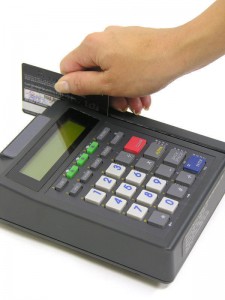 Open your wallet and compare your debit and credit cards. Both probably sport a logo, an embossed account number, an expiration date and, of course, your name. Both may even come with the same nifty picture and background color. In fact, the only distinguishing characteristic may be that little word “debit” on the face of, you guessed it, your debit card.
Open your wallet and compare your debit and credit cards. Both probably sport a logo, an embossed account number, an expiration date and, of course, your name. Both may even come with the same nifty picture and background color. In fact, the only distinguishing characteristic may be that little word “debit” on the face of, you guessed it, your debit card.
But they’re not the same, and knowing the differences between these two cards — as well as the pros and cons of each — can keep your bank accounts intact, your credit rating strong, and your purchases hassle-free.
In general terms, a debit card is like a blank check. When you swipe a debit card through an electronic card reader, you’re filling in the payee line. The merchant verifies that you have enough money in your bank account to cover the purchase. If you do, the transaction is approved and the money is deducted — right then and there — from your account. A credit card, on the other hand, is a promise to pay. The store only checks to see that your credit line hasn’t been exceeded. The transaction is added to your account and at the end of the month you only have to cover a minimum payment.
Debit cards can be a great tool. Like credit cards, they’re convenient. Your wallet doesn’t bulge with paper currency and swiping a card is faster than writing a check. You can even save a trip to the ATM machine by using the card’s cash-back feature. With a debit card you’re only spending money that’s actually in your checking or savings account, so you’re forced to budget. No money, no purchase. Another big advantage: no interest or late fees.
On the other hand, debit cards have some distinct disadvantages. If you don’t use a credit card, even stellar spending habits won’t bolster your credit score. And debit cards may not offer the same level of protection as credit cards. If your debit card is lost or stolen, your maximum liability may be greater. (Check with your financial institution to learn their particular policies.) Another thing, with a credit card you can withhold payment if you’re dissatisfied with a purchase. Purchase with a debit card and the store already has your money. You have less leverage. Are both types of card in your wallet? Use them, but watch out for hazards.